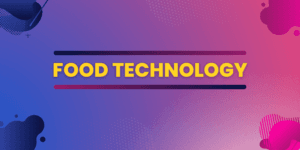Introduction
In the quick-paced world we live in, the era continuously reshapes how we interact with our environment, especially within the meals region. The evolution of the meal era no longer most effectively addresses the growing worldwide population and sustainability concerns but also enriches our culinary stories. This article unfolds the present-day traits of the food era, exploring their kinds, importance, benefits, and the brilliant destiny they promise. Delve into the technological feast that awaits us. 
Definition and Importance
Its significance cannot be overstretched because it aims to ensure food protection, enhance nutritional values, extend shelf life, and limit waste, addressing both exceptional and environmental issues.
Types and Categories
Food generation tendencies fall into various categories, each serving a unique cause:
Sustainable Production: Techniques geared toward decreasing carbon footprint, water utilization, and ensuring moral sourcing.
Food Processing Innovations: Includes strategies to preserve dietary prices whilst extending meal’s shelf lives. Packaging Solutions: Focus on biodegradable, recyclable materials that lessen plastic use.
Food Safety Technologies: Advanced systems for detecting contaminants and ensuring meal hygiene.
Nutrition Tech: Tailored diets and food merchandise designed to meet character nutritional wishes.
Advantages:
Enhanced Food Safety:
Innovative technologies locate pathogens and contaminants, ensuring meal safety.
Reduced Waste: Technologies like smart packaging help in lowering food spoilage.
Sustainability: Methods like vertical farming use less water and land, improving environmental fitness.
Improved Accessibility: Technology makes nutritious meals extra handy, addressing hunger and malnutrition.
Future Scope and Uses
The destiny of the food era holds promising advancements: Concerns:
Lab-grown Meat: Offering a sustainable opportunity to conventional meat manufacturing.
AI in Agriculture: Using AI to optimize farming practices, increasing yield while retaining assets.
Personalized Nutrition: AI-powered apps presenting personalized diet plans primarily based on genetic makeup.
Global Trends and Usage
Certain countries lead in the adoption of food technology developments.
The Netherlands: Pioneering in vertical farming and sustainable agriculture.
USA: Leading in lab-grown meat studies and development.
Japan: Innovating in smart packaging and robotics in meal production.
Future Food Technology Trends News
Stay tuned to traits like block-chain for food traceability, which ensures transparency from farm to table, and the exploration of opportunity proteins, which reduces reliance on traditional cattle farming.
Food Technology Trends Method Followed
Successful meal era trends follow a technique of steady innovation, client remarks integration and adherence to sustainability and protection requirements.
Main Points Summary:
Sustainability and Efficiency: Key Drivers of Food Era Tendencies
Health and Nutrition: Enhanced consciousness of personal well-being and tailor-made diets.
Global Adoption: There are varied adoption fees across nations, with some leading the charge in innovation.
Conclusion
The adventure through meals era developments showcase a future in which meals are more than sustenance; it’s a mirrored image of innovation, sustainability, and fitness. As we pass forward, those developments promise not only to address global challenges but also to enrich our daily lives with higher, more secure, and more personalized food picks.
FAQs
Q. What is the meal generation era?
Food generation is the application of food science to the choice, protection, processing, packaging, distribution, and use of safe food.
Q. Why is meal technology critical?
It ensures meal safety, improves nutritional value, extends shelf life, and decreases waste, addressing each health and environmental issue.
Q. What are a few rising meal generation developments?
Lab-grown meat, AI in agriculture, and customized nutrition are the various top trends.
Q. How does meal technology benefit the environment?
It promotes sustainability through strategies that lessen waste, carbon footprint, and water usage.
Q. Which countries are most interested in meal technology improvements?
The Netherlands, the USA, and Japan are at the forefront of food-era improvements.
By embracing these technological improvements, we step right into a future where food is not only effective plentiful, and safe but also sustainable and tailor-made to our individual health needs.


